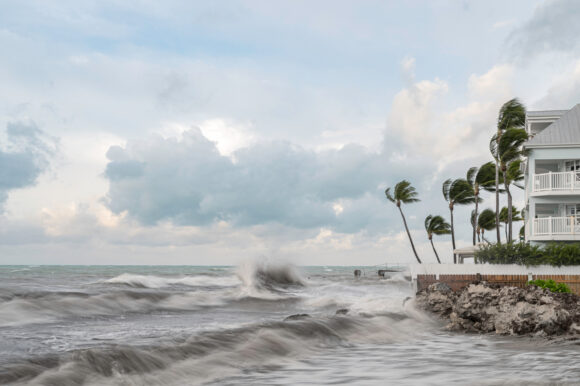Just as many Florida property insurers had hoped to see a boost to the private market with a maximum rate increase for Citizens Property Insurance Corp., state regulators have slashed the rate hike by more than half.
After an unusually long, eight-month deliberation period, Florida Insurance Commissioner Michael Yaworsky announced last week that Citizens’ proposed 14% average increase in homeowners’ multi-peril policies would be pulled back to just a 6.6% average increase.
The move allowed Florida Gov. Ron DeSantis to tout it as a rare reduction in insurance costs for some Florida property owners who have endured repeated rate increases over the last decade – rate increases that showed signs of slowing last year, thanks in part to legislative limits on claims litigation.
“…Data suggests that in 2024, Florida had the lowest average homeowners’ premium increases in the nation, and the overall market has stabilized with 11 new companies having entered the market over the past two years,” DeSantis said in a statement posted last week.
 But the overall, smaller rate for Citizens, a corporation created in 2002 to be the state’s insurer of last resort, could be seen as a slap in the face for free-market advocates and insurance executives who have urged higher premiums for Citizens. The state-created carrier, still the largest insurer in the state, continues to undercut market prices in many Florida counties, thanks to the insurer’s statutorily imposed glidepath. That glidepath, while raised by lawmakers in 2021, still limits annual residential rate increases to no more than 14%, on average, for 2025.
But the overall, smaller rate for Citizens, a corporation created in 2002 to be the state’s insurer of last resort, could be seen as a slap in the face for free-market advocates and insurance executives who have urged higher premiums for Citizens. The state-created carrier, still the largest insurer in the state, continues to undercut market prices in many Florida counties, thanks to the insurer’s statutorily imposed glidepath. That glidepath, while raised by lawmakers in 2021, still limits annual residential rate increases to no more than 14%, on average, for 2025.
Citizens’ Board of Governors in June followed that script, voting to ask for the maximum increase. Data show that for rates to be actuarily sound, a 21% increase would have been needed. Making Citizens’ rates higher than what primary market carriers can offer will attract more insurers to Florida, creating more competition and a healthier market, Florida insurance industry advocates have said repeatedly.
New carriers, or new subsidiaries of existing carriers, have entered the Florida market in the last two years, and most have made take-out offers for thousands of Citizens’ policies. But OIR data show that with Citizens’ premiums still the lowest available in many areas of the state, only about 10% of those take-out offers were accepted by policyholders in 2024.
But the OIR did not seem to see that as a concern. Some 18 months after the office struck down Citizens’ 2023 maximum rate increase request of 12%, regulators last week said that public comments, hurricane-loss models, the impact of the 2022 legislative reforms in reducing litigation costs, and other data had led to the unexpectedly small rate change this year.
Citizens’ officials were circumspect about the OIR order.
“It is common and appropriate for Citizens’ rate-making process to involve a deliberate and thorough regulatory analysis, especially after a particularly active hurricane season,” Citizens’ spokesman Michael Peltier said in a statement. “Moreover, as Governor DeSantis stated, the 2025 rates reflect the many positive developments that have taken place in the Florida property insurance market since our original recommendations were filed.”
OIR did approve a 14.5% increase for wind-only policies for homeowners, slightly higher than what Citizens actuaries had filed for. But for other lines, the office settled on smaller increases than Citizens had requested. For dwelling fire policies, Citizens had requested an average hike of almost 14% for multi-peril. But OIR granted a 10.4% increase. For mobile homes, Citizens’ board asked for a 22% multi-peril increase, but won a 21.7% increase.
For commercial property, Citizens wanted an average spike of 11.5% but was awarded a 6.7% increase. For condominiums, many of which already were facing a perfect storm of higher inspection costs, reserve funding requirement, along with soaring premiums from private insurers, Citizens asked for a 12% increase. OIR approved a 7.1% escalation.
Citizens now has 30 days to submit final manual revisions. Most of the approved rates will take effect after that, with some kicking in June 1, the order explains. The OIR order can be seen here.
Topics Trends Florida Pricing Trends
Was this article valuable?
Here are more articles you may enjoy.



 State Farm Sued Over Policies Backed by Distressed Insurer PHL
State Farm Sued Over Policies Backed by Distressed Insurer PHL  Chubb, The Hartford, Liberty and Travelers Team Up on Surety Tech Launch
Chubb, The Hartford, Liberty and Travelers Team Up on Surety Tech Launch  Florida Jury Returns $779M Verdict for Family of Security Guard Killed at Gambling Cafe
Florida Jury Returns $779M Verdict for Family of Security Guard Killed at Gambling Cafe  Dunkin’ Cashier in Georgia, Stabbed by Rapper, Can’t Claim More Than Workers’ Comp
Dunkin’ Cashier in Georgia, Stabbed by Rapper, Can’t Claim More Than Workers’ Comp 


